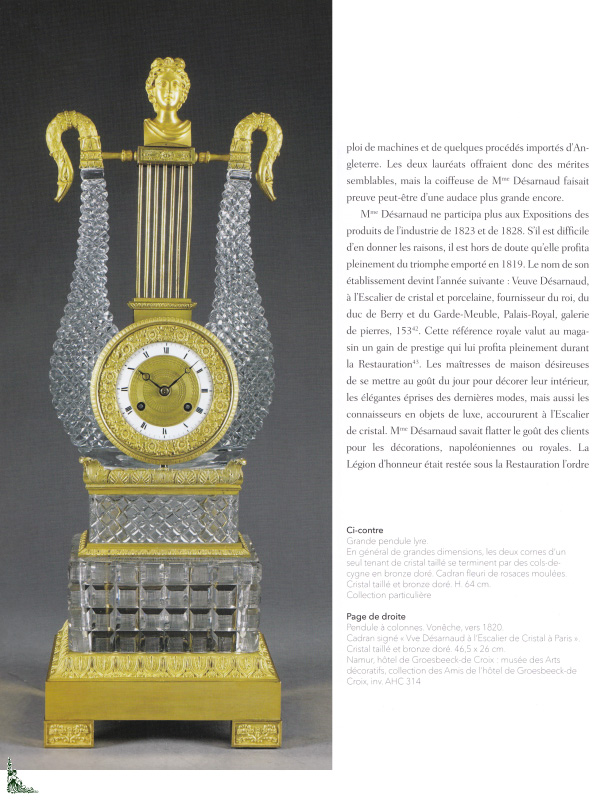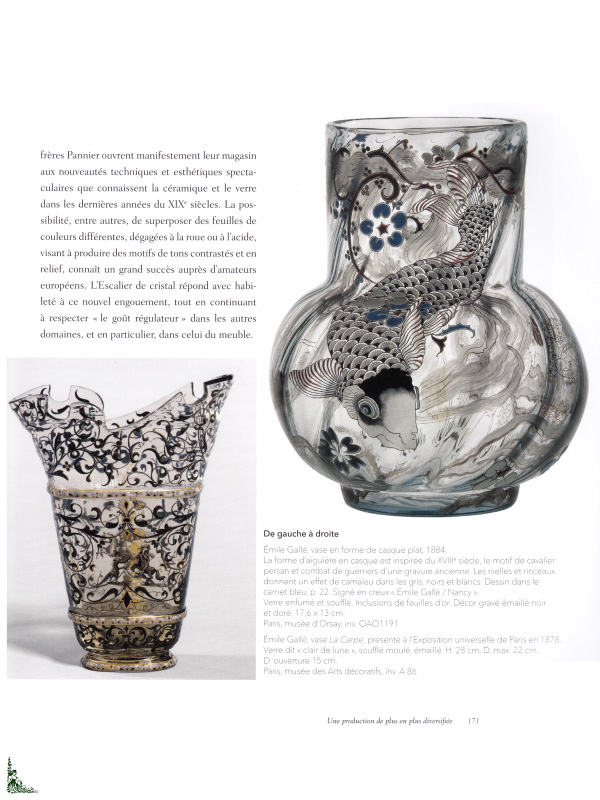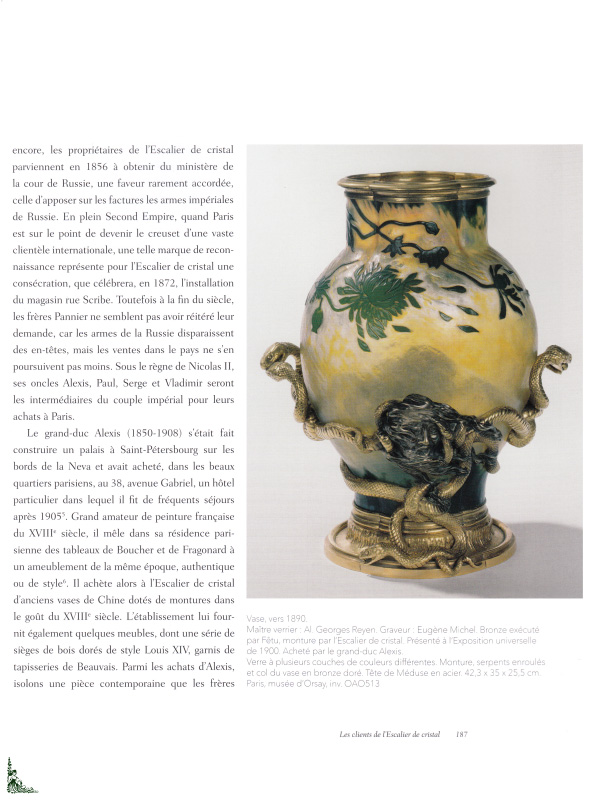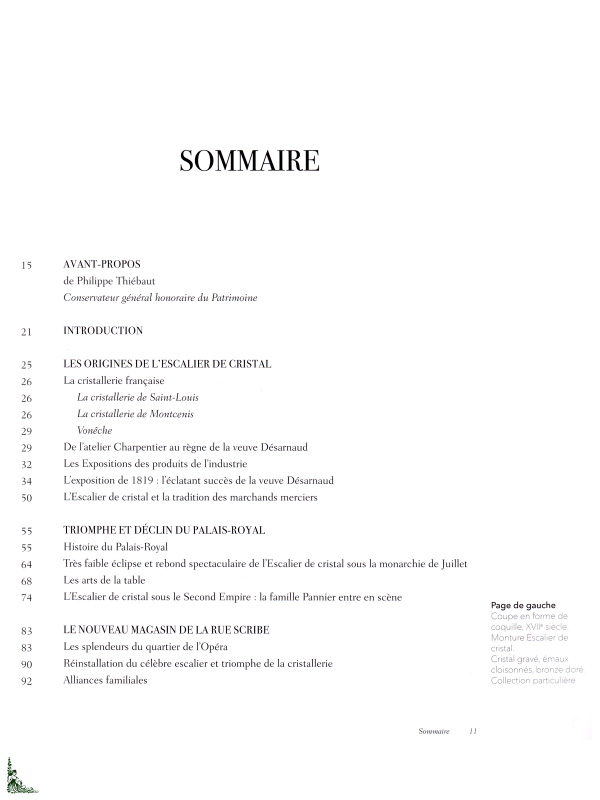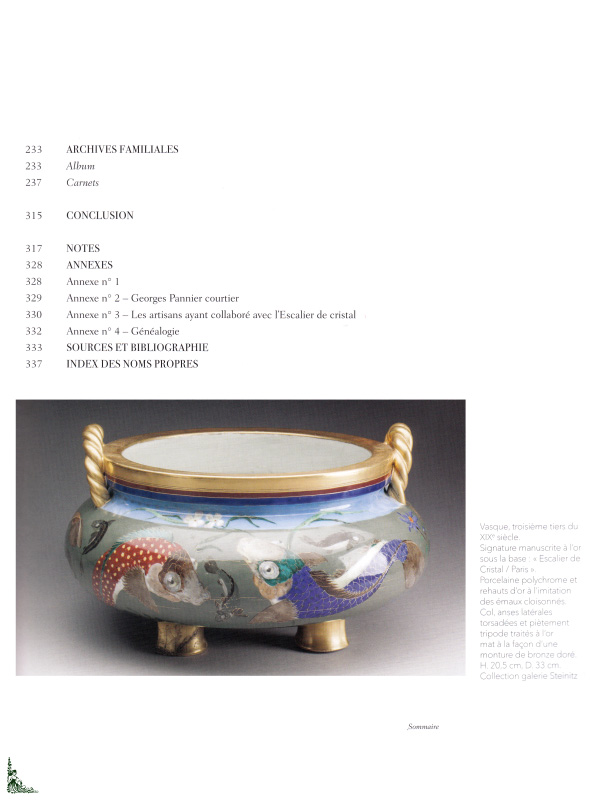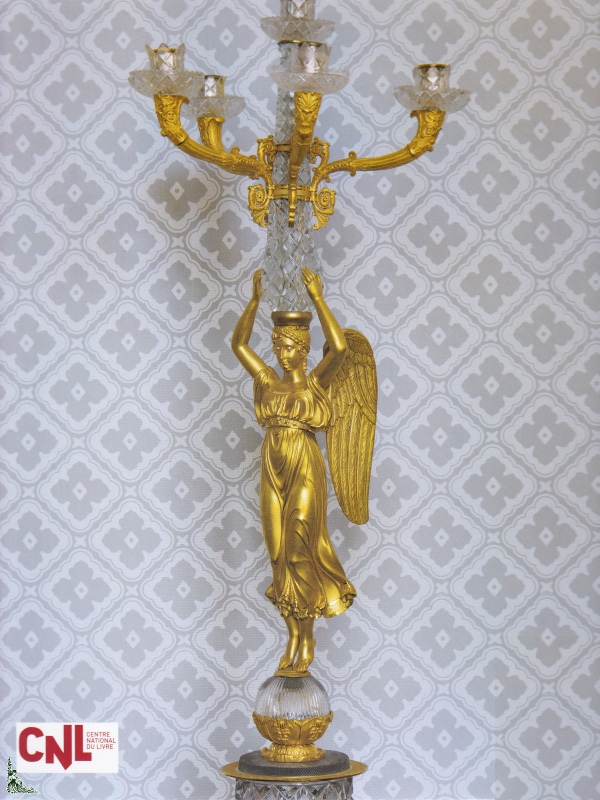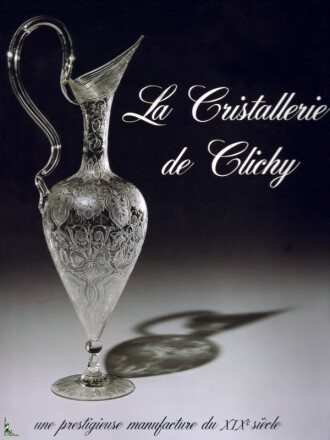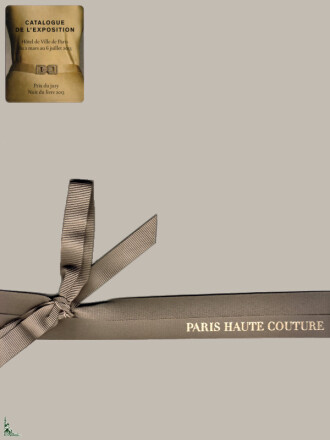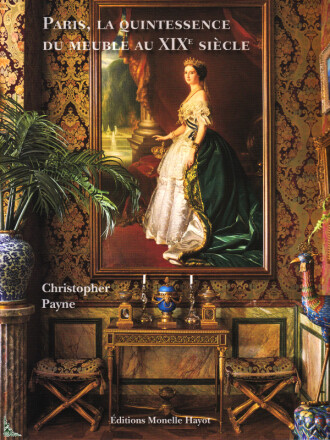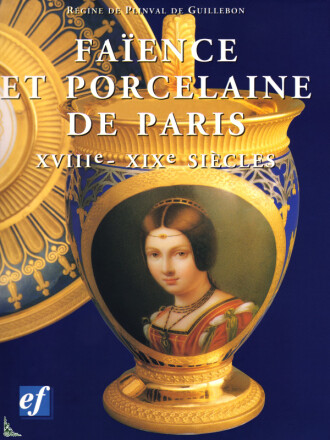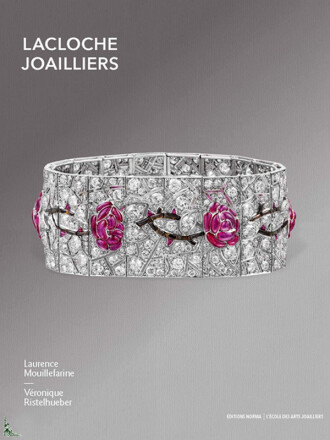L'Escalier de cristal - Luxury in Paris 1809-1923
Buchinformationen
| Autoren : | Annick & Didier Masseau |
| Herausgeber : | Monelle-Hayot (2021) |
| Bindung : | Hardcover (344 color pages) 9-½ inches x 11 inches |
| Sprache : | French |
| ISBN : | 979-10-96561-33-9 |
| EAN : | 9791096561339 |
Beschreibung
L'Escalier de cristal - Luxury in Paris 1809-1923, by A.& D. Masseau, Ed. Monelle-Hayot, 9-½ inches x 11 inches ( 24 cm x 28.5 cm ), hardcover book with 344 full color pages
With 344 color pages and superb illustrations, this this great hardcover book presents the "Escalier de cristal", a renowned store which, from the Palais-Royal to the Opera, survived from the Empire until 1923.
It is part of a family history, of which one of the authors of this book is the heir. The story begins with the entry on the scene of Madame Désarnaud. By assembling cut crystal and gilded bronze in an original and spectacular way, she quickly acquired great renown. During the First Empire, she had a surprising and magical staircase installed, whose name alone could only arouse the curiosity of the public and chroniclers. Under the July Monarchy, Émile Pannier took over the store brilliantly. His two sons, Georges and Henry, endowed with a solid education, became men of taste. Sensors and fashion designers, they manage to maintain a tradition of high quality in the field of decoration, while at the same time trying to adapt to the fashions of the day. This book will, we hope, make the history of the luxury trade better known, and more broadly that of the bourgeoisie, its rise, its behavior, its practices and its tastes.
Contents:
- AVANT-PROPOS by Philippe Thiébaut
- INTRODUCTION
- THE ORIGINS OF THE "ESCALIER DE CRISTAL"
- The French crystal
- The Saint-Louis crystal
- The Montcenis crystal
- Vonêche
- From the Charpentier workshop to the reign of the widow Désarnaud
- Industry product exhibitions
- The 1819 exhibition: the brilliant success of the widow Désarnaud
- The "Escalier de cristal" and the tradition of haberdashery merchants
- TRIUMPH AND DECLINE OF THE PALAIS-ROYAL
- Story of the Palais-Royal
- Very weak eclipse and spectacular bounce of the "Escalier de cristal" under the July Monarchy
- Tableware
- The "Escalier de cristal" under the Second Empire: the Pannier family enters the scene
- THE NEW STORE ON SCRIBE STREET
- The splendours of the Opera district
- Reinstallation of the famous staircase and triumph of the crystal factory
- Family alliances
- INCREASINGLY DIVERSIFIED PRODUCTION
- Furniture: imitations, reinterpretations and creations
- The Pannier brothers and Japonism
- Influence of manga
- Édouard Lièvre (1828-1886)
- Lièvre's influence on the Pannier brothers
- Gabriel Viardot (1830-1906)
- Louis Majorelle (14859-1926)
- Other currents, other cabinetmakers
- Ceramic
- Samson and tradition
- Théodore Deck and Middle Eastern art
- Félix Bracquemond (1833-1914)
- Chaplet (1835-1909) and the invention of decoration on glass pastes
- Haviland and the Auteuil workshop
- Haviland and Émile Pannier
- Bing
- Glass
- Gallé and the "Escalier de verre"
- Brronze
- THE CUSTOMERS OF THE "ESCALIER DE CRISTAL"
- Russian customers
- Orders of the Imperial Family
- The other clients: aristocrats, industrialists and financiers
- The world of letters, arts and performing arts
- Great fashion collectors
- THE BROTHERS PANNIER COLLECTORS
- The Pannier collection
- Georges Pannier's relationship with Jacques Doucet
- STORE CLOSURE, STAIRS SURVIVAL
- FAMILY ARCHIVES
- Album and notebooks
- CONCLUSION
- NOTES
- ANNEXES
- BIBLIOGRAPHY
- INDEX
The French texts are written by Annick and Didier Masseau.
 Description française
Description française
L'Escalier de cristal - Le luxe à Paris 1809-1923
Détails du livre
| Auteur : | Annick & Didier Masseau |
| Éditeur : | Monelle-Hayot (2021) |
| Reliure : | Relié (344 pages couleurs) 24 cm x 28.5 cm ( 9-½ inches x 11 inches ) |
| Langue(s) : | Français |
| ISBN : | 979-10-96561-33-9 |
| EAN : | 9791096561339 |
Description
L'Escalier de cristal - Le luxe à Paris 1809-1923, de A.& D. Masseau, Ed. Monelle-Hayot, 24 cm x 28.5 cm, relié avec 344 pages couleurs
Avec 344 pages couleurs et de superbes illustrations, ce superbe ouvrage relié présente l'Escalier de cristal, un magasin de grande renommée qui, du Palais- Royal à l'Opéra, s'est maintenu de l'Empire jusqu'à 1923.
Il s'inscrit dans une histoire familiale, dont l'un des auteurs de ce livre est l'héritier. L'histoire commence par l'entrée en scène de Madame Désarnaud. En assemblant de façon originale et spectaculaire le cristal taillé et le bronze doré, elle acquiert rapidement une grande renommée. Durant le Premier Empire, elle fait installer un escalier surprenant et féérique dont le nom seul ne pouvait qu'exciter la curiosité du public et des chroniqueurs. Sous la monarchie de Juillet, Émile Pannier reprend le magasin avec brio. Ses deux fils, Georges et Henry, dotés d'une solide formation, deviennent des hommes de goût. Capteurs et créateurs de modes, ils parviennent à maintenir, dans le domaine de la décoration, une tradition de haute qualité, en essayant parallèlement de s'adapter aux modes du jour. Cet ouvrage permettra, nous l'espérons, de faire mieux connaître l'histoire du commerce du luxe, et plus largement celle de la bourgeoisie, de son ascension, de ses conduites, de ses pratiques et de ses goûts.
Les textes en Français sont de Annick et Didier Masseau.
Principaux chapitres de l'ouvrage :
- AVANT-PROPOS de Philippe Thiébaut
- INTRODUCTION
- LES ORIGINES DE L'ESCALIER DE CRISTAL
- La cristallerie française
- La cristallerie de Saint-Louis
- La cristallerie de Montcenis
- Vonêche
- De l'atelier Charpentier au règne de la veuve Désarnaud
- Les expositions des produits de l'industrie
- L'exposition de 1819 : l'éclatant succès de la veuve Désarnaud
- L'Escalier de cristal et la tradition des marchands merciers
- TRIOMPHE ET DÉCLIN DU PALAIS-ROYAL
- Histoire du Palais-Royal
- Très faible éclipse et rebond spectaculaire de l'Escalier de cristal sous la monarchie de Juillet
- Les arts de la table
- L'Escalier de cristal sous le Second Empire : la famille Pannier entre en scène
- LE NOUVEAU MAGASIN DE LA RUE SCRIBE
- Les splendeurs du quartier de l'Opéra
- Réinstallation du célèbre escalier et triomphe de la cristallerie
- Alliances familiales
- UNE PRODUCTION DE PLUS EN PLUS DIVERSIFIÉE
- L'ameublement : imitations, réinterprétations et créations
- Les frères Pannier et le japonisme
- Influence des mangas
- Édouard Lièvre (1828-1886)
- Influence de Lièvre sur les frères Pannier
- Gabriel Viardot (1830-1906)
- Louis Majorelle (14859-1926)
- Autres courants, autres ébénistes
- La céramique
- Samson et la tradition
- Théodore Deck et l'art du Moyen-Orient
- Félix Bracquemond (1833-1914)
- Chaplet (1835-1909) et l'invention du décor à pâtes rapportées
- Haviland et l'atelier d'Auteuil
- Haviland et Émile Pannier
- Bing
- Le verre
- Gallé et l'Escalier de verre
- Les bronzes
- LES CLIENTS DE L'ESCALIER DE CRISTAL
- Les clients russes
- Les commandes de la famille impériale
- Les autres clients : aristocrates, industriels et financiers
- Le monde des lettres, des arts et du spectacle
- Grands couturiers collectionneurs
- LES FRÈRES PANNIER COLLECTIONNEURS
- La collection Pannier
- Les relations de Georges Pannier avec Jacques Doucet
- FERMETURE DU MAGASIN, SURVIE DE L'ESCALIER
- ARCHIVES FAMILIALES
- Album et carnets
- CONCLUSION
- NOTES
- ANNEXES
- BIBLIOGRAPHIE
- INDEX



